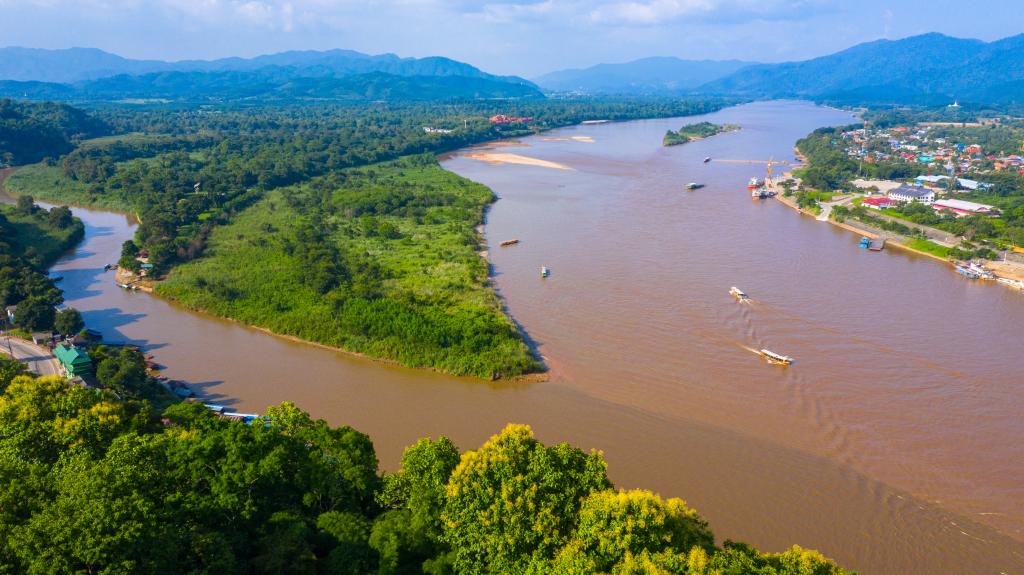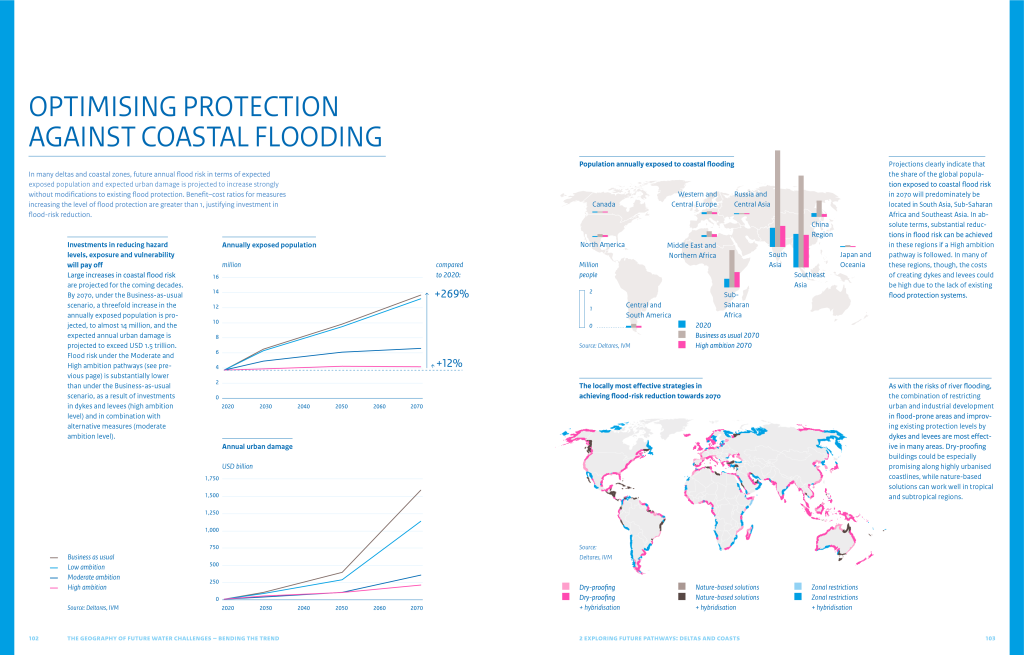Geography of Future Water Challenges
This study The Geography of Future Water Challenges – Bending the trend shows that there is a great urgency to tackle global water and climate adaptation issues. This will require radical changes in the thinking about the value of water and in policy development worldwide, not only within the water sector itself, but also in adjacent sectors, such as agriculture, industry, energy, urban development, infrastructure and spatial planning, and nature.
With a central role for water, the study explores pathways to reduce water and climate risks in four types of 'hotspot landscapes': river basins, deltas and coasts, drylands, and cities. Despite a growing world population, a growing economy and further climate change, the study shows that much can be accomplished with respect to reducing water use by households, industries and agriculture, the risk of flooding by rivers and the sea, and water pollution and ecological deterioration. In addition, land subsidence in delta areas can be countered, food production in dryland areas can be doubled with half the water use, and the risk of local and cross-border conflict can be greatly reduced. A wicked sustainability problem is the construction of new dams; while contributing to the production of renewable energy, dams also have a negative impact on the hydrodynamics and sediment flows in rivers as well as on ecological quality.

Contribution to sustainable development
Water is linked to all Sustainable Development Goals (SDGs). Addressing water- and climate-related challenges from a ‘water’ perspective is projected to contribute in many ways to the SDGs and thus to sustainable development, as this study shows.
Required changes in policy development — nine crucial steps
The study concludes by formulating nine critical and conditional steps to break away from business-as-usual approaches and really bend the trend, from a local to a global level.

This publication was commissioned by the Netherlands Special Envoy of International Water Affairs and the Ministry of Infrastructure and Water Management. The publication was created in collaboration with Deltares, IHE Delft, Utrecht University, VU University Amsterdam, Wageningen University and Research, Blueland Consultancy, ONE Architecture and Urbanism, Uncharted waters and De Waterwerkers.
Authors
Specifications
- Publication title
- Geography of Future Water Challenges
- Publication subtitle
- Bending the Trend
- Publication date
- 14 March 2023
- Publication type
- Report
- Page count
- 215
- Publication language
- English
- Product number
- 4376




